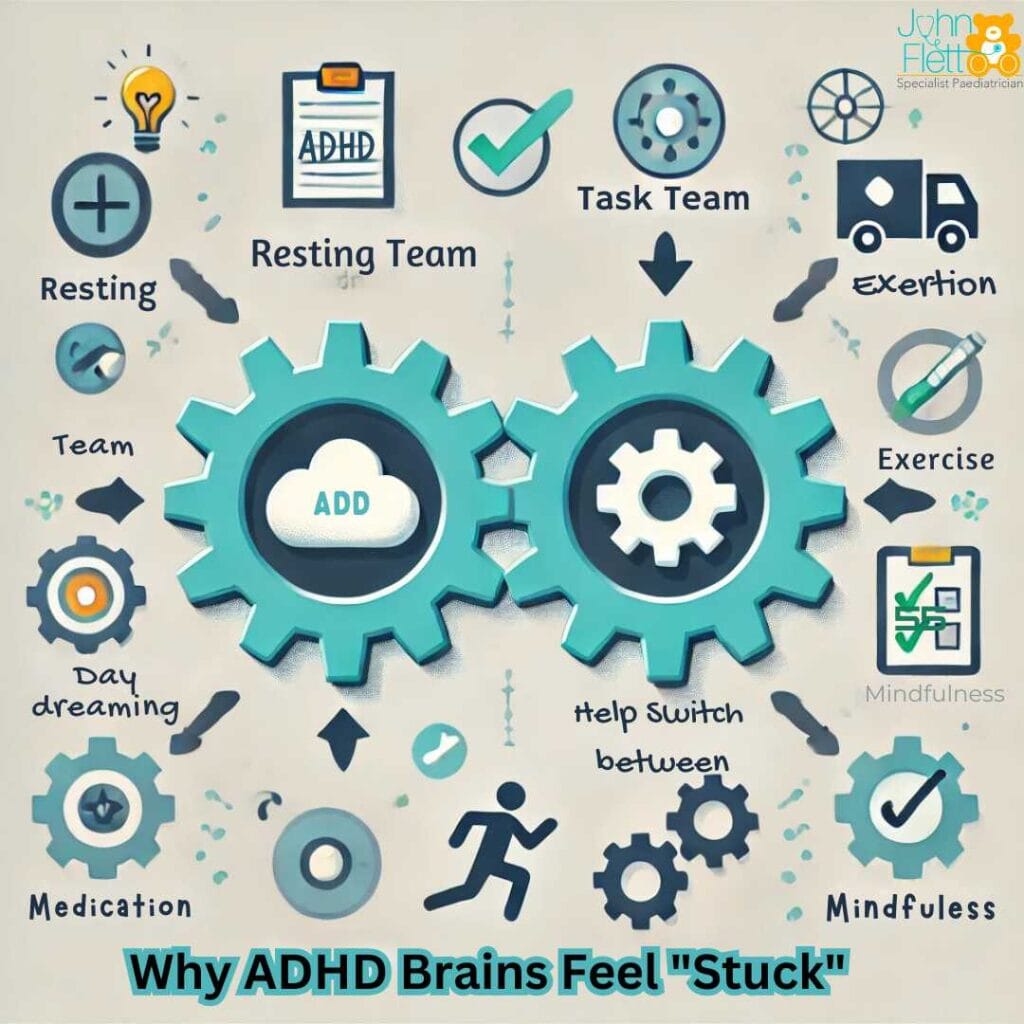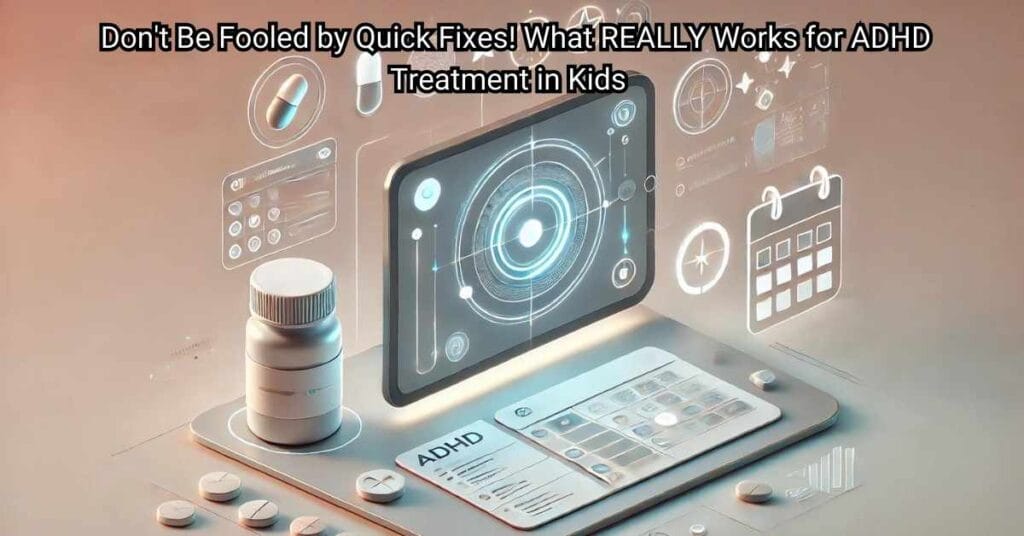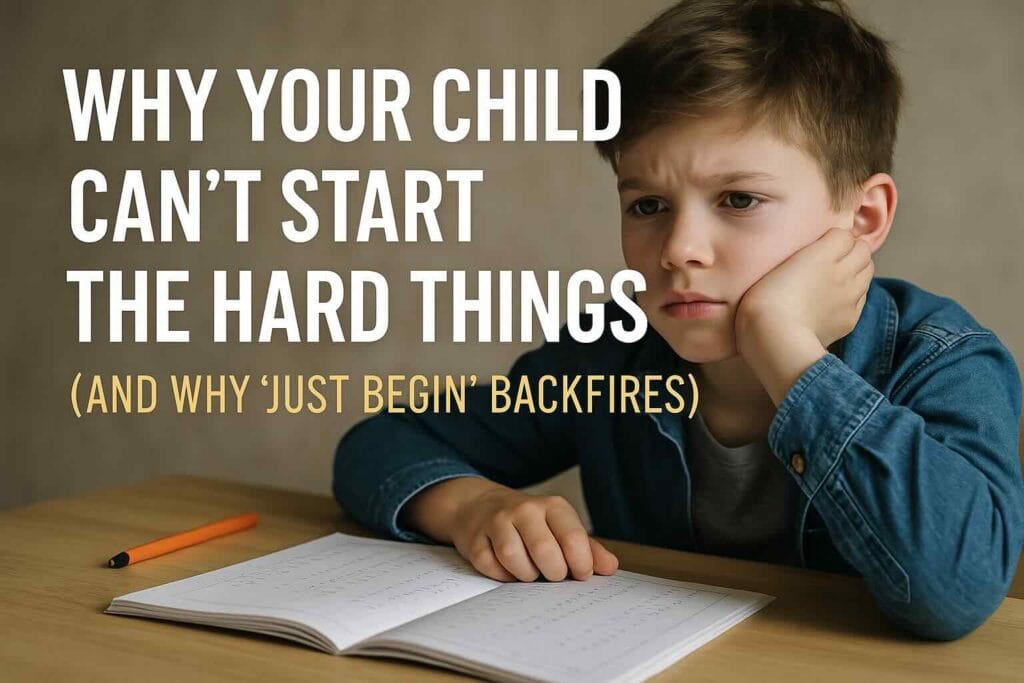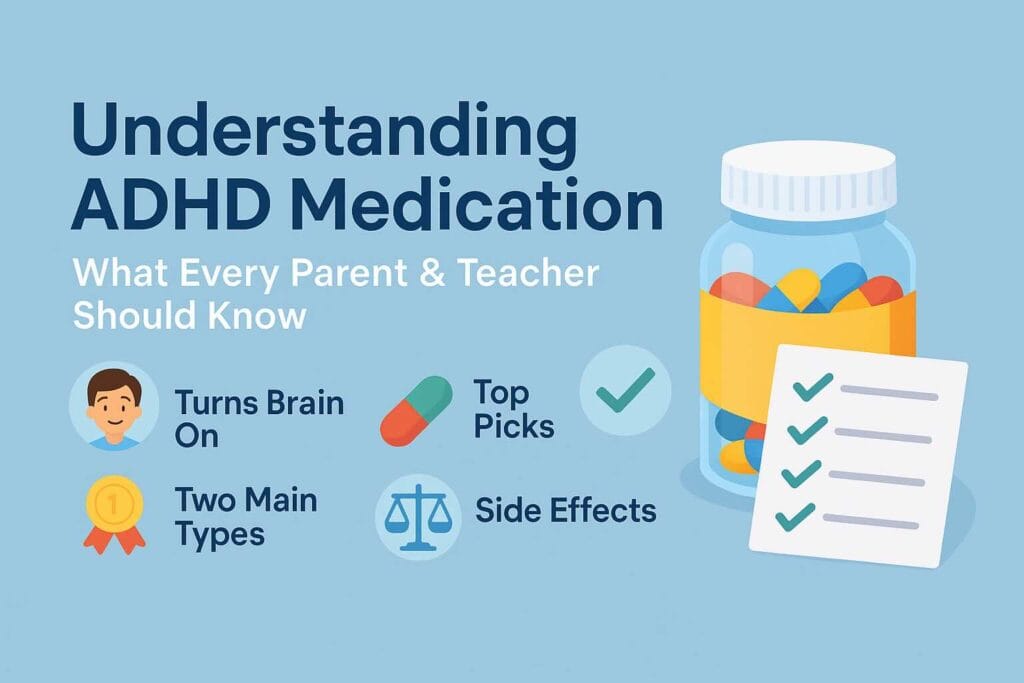Why ADHD Brains Get “Stuck” and How to Help: A Deep Dive for Parents

If you’re parenting a child with ADHD—or navigating ADHD yourself—you might have noticed how easy it is to get “stuck.” Thoughts spiral, tasks feel overwhelming, and emotions can run high. This isn’t laziness or lack of effort—it’s how the ADHD brain is wired. Let’s explore what’s happening in the brain, why it impacts focus and mood, and practical ways to help, including the role of medication and natural strategies.
The Two Teams in Your Brain: The Task Team and the Resting Team
The brain is a bit like a tag team, with two groups working together to manage our thoughts and actions:
- The Task Team (Task Positive Network or TPN):
- This team switches on when you need to focus or get something done. Whether it’s solving a maths problem, tidying up, or making dinner, the Task Team is all about paying attention to the here and now.
- The Resting Team (Default Mode Network or DMN):
- This team takes over when your mind isn’t focused on the outside world. It helps you reflect on the past, imagine the future, and even daydream. While important for creativity and problem-solving, the Resting Team is supposed to quiet down when focus is needed.
What Happens in ADHD?
In ADHD, these two teams don’t play well together. The Resting Team often gets “stuck in the spotlight,” even when it’s time to let the Task Team take over. This imbalance creates challenges like:
- Struggling to focus on tasks.
- Overthinking or rumination. Thoughts loop around things like past mistakes or future worries, making it hard to move forward.
- Emotional overwhelm. Big feelings can take over because the brain struggles to switch to a calmer, more focused state.
For example:
- Your child might be unable to start their homework because they’re busy replaying a bad moment at school.
- You might sit down to work on something important, only to spend an hour distracted by thoughts of everything you didn’t finish yesterday.
Why Does This Matter?
When the brain can’t balance these teams, it’s exhausting—for both kids and parents. Tasks feel harder, emotions run higher, and simple things like finishing a chore or staying calm during a meltdown become uphill battles. This imbalance can also lead to feelings of frustration, guilt, and even sadness, as kids and adults alike wonder why they can’t just “get it together.”
How Can We Help ADHD Brains Work Better?
The good news is that there are many ways to help the brain’s Task Team and Resting Team work together. Some involve medication, while others are natural strategies you can start today.
1. Medication: The Brain’s Coach
For many, ADHD medication like stimulants can act as a coach, helping the two teams take turns more effectively.
- How it helps: Stimulants increase the availability of dopamine in the brain. Dopamine is like the brain’s reward system—it helps you feel motivated and stay on task. Medication also improves communication between the two teams, making it easier to switch gears when needed.
- Why it’s important: If medication is working for your child (or you), it’s crucial to stay consistent. Think of it like wearing glasses: without them, things become blurry and harder to navigate.
2. Physical Activity: A Reset Button
Movement isn’t just good for the body—it’s a game-changer for the ADHD brain.
- Why it helps: Exercise increases dopamine and other brain chemicals that improve focus and mood. It also helps calm the overactive Resting Team, giving the Task Team a chance to shine.
- What to try: Short bursts of activity, like a walk, jumping jacks, or a quick trampoline session, can help your child refocus and feel more in control.
3. Mindfulness and Breathing: Calm the Chaos
Simple mindfulness exercises can teach the brain to switch off rumination and stay grounded.
- Why it helps: Breathing exercises and mindfulness calm the nervous system, reducing stress and helping the Resting Team quiet down.
- What to try: Apps like Calm or Headspace, or even a simple practice of taking three slow, deep breaths together, can make a big difference.
4. Break Tasks Into Small Wins
ADHD brains thrive on momentum, and tackling smaller steps builds confidence.
- Why it helps: Each small win gives the brain a dopamine boost, making it easier to move to the next task.
- What to try: Instead of “clean your room,” start with “pick up all the books.” Breaking it down makes it feel less overwhelming.
5. Healthy Habits for a Stronger Brain
The ADHD brain is sensitive to disruptions in routine, so creating healthy habits is essential.
- Sleep: A well-rested brain is better at switching between the Task Team and Resting Team. Stick to consistent bedtimes.
- Nutrition: A balanced diet fuels focus and energy. Include proteins, healthy fats, and whole grains.
- Hydration: Dehydration can worsen focus and mood, so keep water handy.
6. Emotional Coaching
Children with ADHD often feel frustrated or discouraged when things don’t go as planned. Helping them name and process their emotions can reduce the intensity of big feelings.
- What to try: Validate their feelings first (“I see you’re really upset”), then guide them toward a solution. This teaches emotional regulation over time.
The Power of Consistency
Managing ADHD is a marathon, not a sprint. Medication, routines, and natural strategies work best when they’re used consistently. Some days will feel easier than others—that’s normal. Celebrate the small wins, be patient on the tough days, and remember that progress is a journey.
A Final Thought for Parents
ADHD brains aren’t broken—they’re just different. With the right support, kids (and adults!) with ADHD can learn to work with their brains rather than against them. By balancing medication with natural strategies like movement, mindfulness, and healthy routines, you’re helping your child build the tools they need to thrive in their own unique way.
You’re not alone in this journey, and every step forward is a step worth celebrating.




Responses